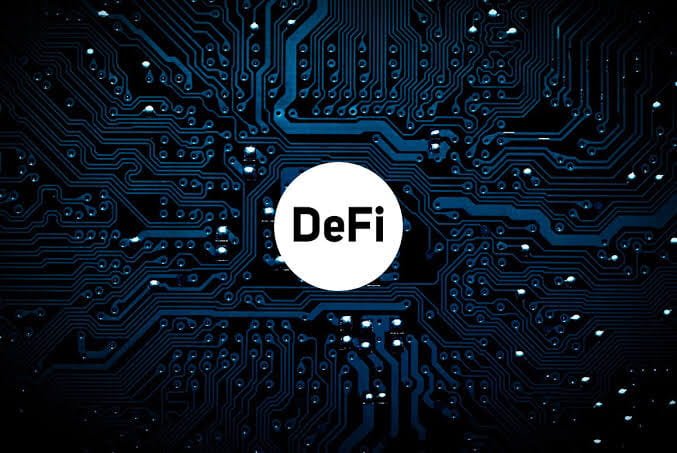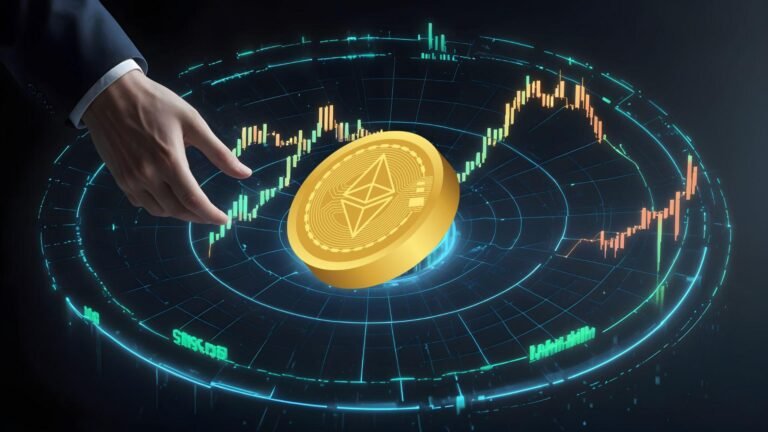The cryptocurrency revolution has fundamentally transformed how we perceive and interact with digital assets, with Ethereum and the altcoin landscape leading this unprecedented evolution. Since Bitcoin’s inception in 2009, thousands of alternative cryptocurrencies have emerged, creating a diverse ecosystem that extends far beyond simple peer-to-peer transactions. The Ethereum and altcoin landscape represents a paradigm shift toward programmable money, decentralised applications, and innovative financial instruments that challenge traditional banking systems.
Ethereum’s introduction in 2015 marked a pivotal moment in cryptocurrency history, introducing smart contracts and establishing the foundation for what we now recognise as the modern altcoin landscape. This revolutionary platform didn’t just create another digital currency; it birthed an entire ecosystem of decentralised applications, financial protocols, and innovative blockchain solutions that continue to shape the future of digital finance.
Ethereum’s Revolutionary Impact
What Makes Ethereum Different from Bitcoin
Ethereum distinguished itself from Bitcoin by introducing smart contracts, self-executing contracts with terms directly written into code. Unlike Bitcoin’s primary function as digital gold, Ethereum serves as a decentralized computing platform that enables developers to build complex applications on its blockchain. This fundamental difference positioned Ethereum as the backbone of the altcoin landscape, providing the infrastructure for countless innovative projects.
The Ethereum Virtual Machine (EVM) processes these smart contracts, creating an environment where developers can deploy decentralized applications (dApps) without intermediaries. This capability transformed the cryptocurrency ecosystem from simple value transfer mechanisms into programmable financial instruments capable of automating complex transactions and agreements.
Smart Contracts: The Building Blocks of Innovation
Smart contracts revolutionized the Ethereum and altcoin landscape by eliminating the need for trusted third parties in digital agreements. These programmable contracts automatically execute when predetermined conditions are met, reducing costs, increasing transparency, and minimizing human error. The implications extend far beyond simple transactions, enabling:
Decentralized Finance (DeFi) protocols that provide lending, borrowing, and trading services without traditional financial intermediaries. Non-fungible tokens (NFTs) that represent unique digital assets and ownership rights. Decentralized Autonomous Organizations (DAOs) that operate through smart contract governance rather than traditional corporate structures.
The versatility of smart contracts created fertile ground for the altcoin explosion, as developers realized they could create specialized tokens and applications tailored to specific use cases and industries.
The Evolution of the Altcoin Landscape
From Simple Tokens to Complex Ecosystems
The altcoin landscape has evolved dramatically since Ethereum’s launch, progressing from simple ERC-20 tokens to sophisticated blockchain ecosystems with unique consensus mechanisms and specialized functionalities. Early altcoins primarily focused on improving Bitcoin’s perceived limitations, such as transaction speed and energy consumption. However, the Ethereum and altcoin landscape today encompasses diverse categories including:
Layer 1 blockchains like Solana, Cardano, and Polkadot compete directly with Ethereum, offering alternative approaches to scalability, security, and decentralization. Layer 2 solutions such as Polygon and Arbitrum build upon Ethereum’s infrastructure to address scalability challenges while maintaining security. Specialized utility tokens power specific applications within the DeFi ecosystem, gaming platforms, and enterprise blockchain solutions.
Major Categories Shaping the Altcoin Market
The modern altcoin landscape encompasses several distinct categories, each serving specific purposes within the broader cryptocurrency ecosystem. DeFi tokens represent protocols that recreate traditional financial services on blockchain networks, including decentralized exchanges, lending platforms, and yield farming protocols. These tokens often provide governance rights and revenue sharing for protocol users.
Gaming and Metaverse tokens have emerged as significant players in the Ethereum and altcoin landscape, powering virtual worlds, play-to-earn games, and digital asset marketplaces. Projects like Axie Infinity, The Sandbox, and Decentraland demonstrate how blockchain technology can transform gaming economies and virtual property ownership.
Infrastructure tokens support the underlying technology that powers blockchain networks, including oracle services, cross-chain bridges, and developer tools. These projects address critical infrastructure needs within the cryptocurrency ecosystem, enabling seamless interaction between different blockchain networks.
DeFi Ethereum’s Killer Application

Transforming Traditional Finance
Decentralized Finance (DeFi) represents perhaps the most significant innovation within the Ethereum and altcoin landscape, recreating traditional financial services without centralized intermediaries. The total value locked (TVL) in DeFi protocols has grown from virtually zero to hundreds of billions of dollars, demonstrating massive market adoption and confidence in these systems.
Automated Market Makers (AMMs) like Uniswap revolutionized cryptocurrency trading by enabling permissionless liquidity provision and trading without traditional order books. Users can provide liquidity to trading pairs and earn fees from transactions, creating new income streams within the DeFi ecosystem.
Lending and borrowing protocols such as Aave and Compound allow users to earn interest on deposited cryptocurrencies or borrow assets against collateral. These protocols operate 24/7 without human intervention, providing global access to financial services regardless of geographic location or traditional banking relationships.
Yield Farming and Liquidity Mining
The DeFi landscape introduced innovative mechanisms like yield farming and liquidity mining, where users earn additional tokens by providing liquidity or participating in protocol governance. These mechanisms align user incentives with protocol success while distributing governance tokens to active community members.
Yield farming strategies can involve complex interactions across multiple protocols, with users optimizing returns through sophisticated strategies involving lending, borrowing, and liquidity provision. This complexity has spawned an entire ecosystem of yield aggregators and robo-advisors that automate optimal farming strategies for users.
The emergence of governance tokens within the Ethereum and altcoin landscape has democratized protocol decision-making, allowing token holders to vote on important protocol changes, fee structures, and development priorities.
NFTs and Digital Ownership Revolution
Beyond Digital Art: Utility and Innovation
Non-Fungible Tokens (NFTs) have expanded far beyond digital art to encompass a wide range of use cases within the Ethereum and altcoin landscape. While profile picture collections gained mainstream attention, the underlying technology enables programmable ownership rights for digital and physical assets.
Utility NFTs provide access to exclusive communities, services, or experiences, creating new business models for content creators and service providers. Gaming NFTs represent in-game assets that players truly own and can trade across different games and platforms.
Real-world asset tokenization through NFTs enables fractional ownership of physical assets like real estate, artwork, and collectibles, potentially democratizing access to traditionally illiquid investment opportunities.
The Creator Economy and NFT Marketplaces
The NFT ecosystem within the Ethereum and altcoin landscape has empowered creators to monetize their work directly without traditional intermediaries. NFT marketplaces like OpenSea, Foundation, and SuperRare provide platforms for creators to mint, showcase, and sell their digital creations to global audiences.
Royalty mechanisms embedded in NFT smart contracts ensure creators receive ongoing compensation when their works are resold, creating sustainable income streams that benefit artists long-term. This innovation addresses historical challenges in the creative industry where artists rarely benefited from the appreciation of their work in secondary markets.
Scaling Solutions and Layer 2 Networks
Addressing Ethereum’s Scalability Challenges
As the Ethereum and altcoin landscape grew, network congestion and high transaction fees became significant barriers to mainstream adoption. Layer 2 scaling solutions emerged as critical infrastructure to address these challenges while maintaining Ethereum’s security guarantees.
Optimistic Rollups and Zero-Knowledge Rollups process transactions off the main Ethereum chain while periodically submitting transaction batches to the mainnet for final settlement. These solutions dramatically reduce transaction costs and increase throughput without compromising security.
Polygon (formerly Matic Network) has become one of the most successful Layer 2 solutions, hosting numerous DeFi protocols, NFT marketplaces, and gaming applications. The network’s proof-of-stake consensus mechanism provides fast and cheap transactions while maintaining compatibility with Ethereum smart contracts.
The Multi-Chain Future
The evolution of the altcoin landscape has led to a multi-chain ecosystem where different blockchain networks specialize in specific use cases or performance characteristics. Cross-chain bridges and interoperability protocols enable asset transfers and communication between different blockchain networks.
Polkadot’s parachain architecture allows specialized blockchains to connect and share security while maintaining their unique features. Cosmos’ Inter-Blockchain Communication (IBC) protocol enables sovereign blockchains to interact and exchange value seamlessly. This multi-chain approach acknowledges that no single blockchain can optimally serve all use cases, leading to a more diverse and resilient cryptocurrency ecosystem.
Also Read: Bitcoin Fans Slam Altcoin Rush as Billions Flow to Balance Sheets
Regulatory Landscape and Institutional Adoption

Navigating Regulatory Uncertainty
The Ethereum and altcoin landscape operates within an evolving regulatory environment that varies significantly across jurisdictions. Regulatory clarity remains a critical factor for institutional adoption and mainstream acceptance of cryptocurrency technologies.
Security classification of various altcoins continues to be a contentious issue, with regulators working to develop appropriate frameworks for different types of digital assets. The distinction between utility tokens, security tokens, and commodities has significant implications for project compliance and market access.
Central Bank Digital Currencies (CBDCs) represent government responses to the growth of the cryptocurrency ecosystem, potentially competing with or complementing existing altcoins depending on their design and implementation.
Institutional Investment and Infrastructure
Institutional adoption has accelerated significantly within the Ethereum and altcoin landscape, with major corporations, investment funds, and financial institutions allocating portions of their portfolios to cryptocurrencies. Grayscale’s cryptocurrency trusts, MicroStrategy’s Bitcoin strategy, and Tesla’s cryptocurrency experiments have legitimized institutional participation.
Cryptocurrency exchanges have evolved into sophisticated financial institutions offering custody services, derivatives trading, and institutional-grade infrastructure. These developments have reduced barriers to entry for institutional investors while improving market liquidity and price discovery mechanisms.
Emerging Trends and Future Outlook
Web3 and Decentralized Internet
The Web3 movement represents the next evolution of internet infrastructure, built upon blockchain technology and the principles established within the Ethereum and altcoin landscape. Decentralized storage solutions, censorship-resistant communication protocols, and self-sovereign identity systems are emerging as critical components of this new internet paradigm.
Social tokens and creator coins enable new models of community building and content monetization, allowing creators to build direct economic relationships with their audiences without traditional platform intermediaries.
Sustainability and Environmental Considerations
Environmental concerns surrounding proof-of-work consensus mechanisms have driven innovation toward more sustainable alternatives within the altcoin landscape. Ethereum’s transition to proof-of-stake through “The Merge” reduced the network’s energy consumption by over 99%.
Carbon-neutral blockchains and renewable energy integration are becoming increasingly important considerations for projects seeking long-term sustainability and regulatory compliance. Green cryptocurrencies that prioritize environmental responsibility are gaining traction among environmentally conscious investors.
Integration with Traditional Finance
The boundary between traditional finance and the cryptocurrency ecosystem continues to blur as fintech companies integrate blockchain technology into existing financial services. Payment processors now support cryptocurrency transactions, while traditional banks explore blockchain-based settlement systems and digital asset custody services.
Stablecoins serve as crucial bridges between traditional currencies and the Ethereum and altcoin landscape, providing price stability for DeFi applications while enabling global value transfer without traditional correspondent banking relationships.
Investment Considerations and Risk Management
Portfolio Diversification Strategies
Investing in the Ethereum and altcoin landscape requires careful consideration of risk tolerance, investment timeline, and portfolio diversification strategies. Dollar-cost averaging can help mitigate volatility risks associated with cryptocurrency investments.
Fundamental analysis of altcoin projects should consider factors such as development activity, community engagement, tokenomics, and real-world utility. Technical analysis can provide insights into market trends and potential entry or exit points.
Risk management strategies should account for the high volatility and regulatory uncertainty inherent in the cryptocurrency ecosystem. Diversification across different categories of altcoins and traditional asset classes can help manage overall portfolio risk.
Conclusion
The Ethereum and altcoin landscape continues to evolve at an unprecedented pace, driven by technological innovation, regulatory developments, and growing mainstream adoption. From humble beginnings as an experimental platform for smart contracts, Ethereum has become the foundation for a trillion-dollar ecosystem encompassing DeFi protocols, NFT marketplaces, gaming platforms, and Web3 infrastructure.
As we look toward the future, the altcoin landscape will likely become increasingly specialized, with different blockchain networks optimizing for specific use cases and performance requirements. Interoperability solutions will enable seamless value transfer and communication between these networks, creating a more connected and efficient cryptocurrency ecosystem.
The success of the Ethereum and altcoin landscape ultimately depends on its ability to solve real-world problems, provide genuine utility, and navigate evolving regulatory frameworks while maintaining the decentralized principles that make blockchain technology transformative.

